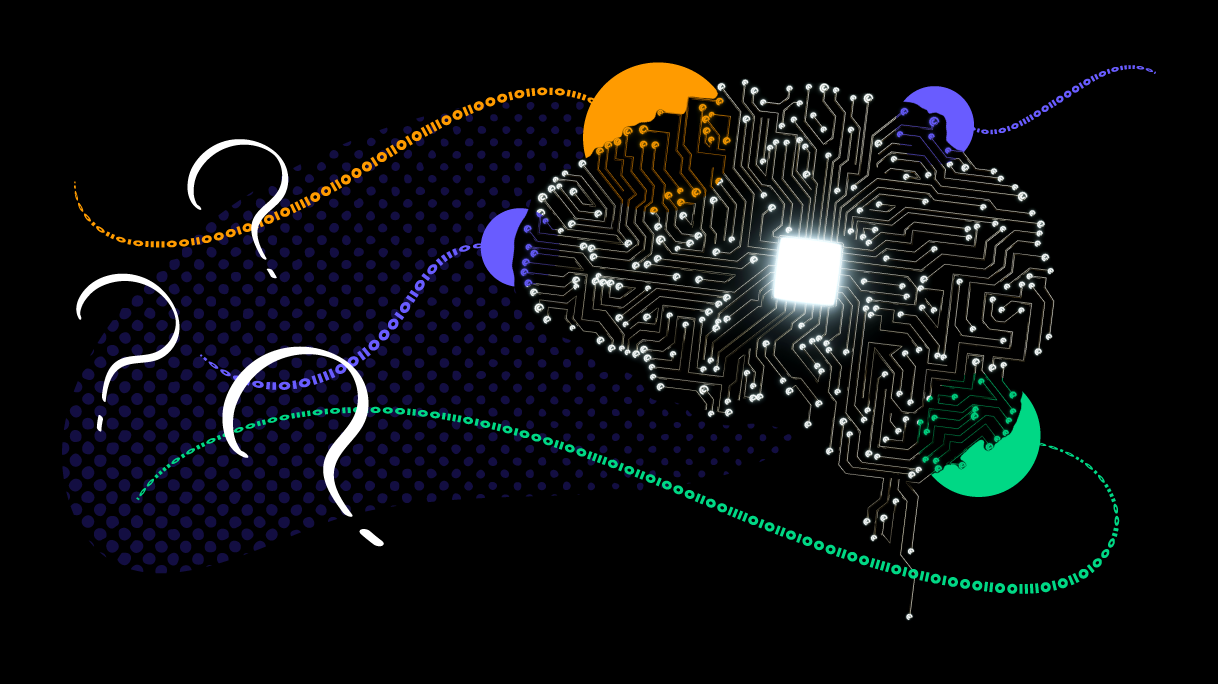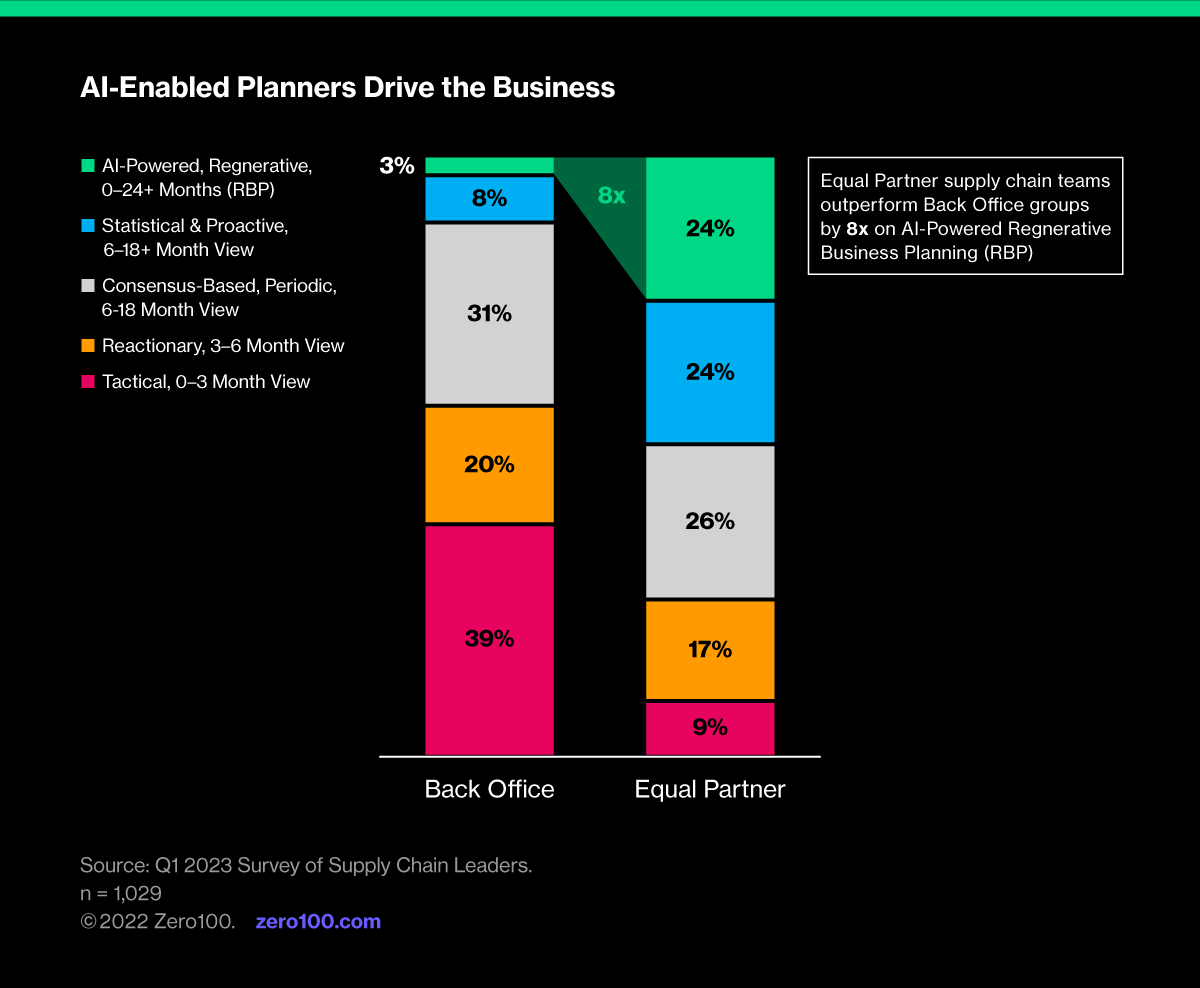
AI Unleashed: Curiosity for the Win
We’re on the cusp of AI-led supply chain revolution. AI capability could also outpace our capacity for change. Transformation fundamentals are now table stakes. Diving one inch deeper into the AI alphabet soup may be the great leap that saves the world.
A single AI chatbot now contains more knowledge than any human has ever known.
In the six months since OpenAI’s November 2022 launch of ChatGPT, the AI online concierge has evolved from producing simple strings of text to composing hit songs and scoring 90th percentile on the career-defining U.S. Bar Exam.
Simultaneous advances in large-language models (LLM), generative AI, and neural networks mean digital technology has just jumped the gap between prediction and understanding. And the run has just begun.
Supply chains are experiencing comparable AI-powered breakthroughs in cost, cash, service, and, not least, carbon. It’s no surprise that the C-suite has taken notice.
Our March 2023 survey of 1,029 supply chain executives showed that the superior predictive and adaptive capacity of AI-powered supply chain planning makes supply chain executives eight times more likely to move from back-office to equal-partner status in the boardroom.

But Then…
Expectations of AI are also running hot. Mentions of artificial intelligence in earnings calls were up 75% in the first quarter of 2023 vs. the same period in 2022.
Investment bank Societe Generale estimated that without AI-led earnings stories, the S&P Stock Index would be down 2% 2023 year to date, rather than up 8%.
In conditions like these, it’s natural for company leadership to feel pressure to make public AI proclamations ahead of the value curve.
A February 2023 McKinsey study found that 2005-2019 productivity growth averaged just 1.4% - well below the 2.2% average since World War II.
This time may really be different, but the question on how to embrace AI’s real potential without being overcome by the hype remains.
What’s Old Is New…
In part, the answer is foundational: Supply chain AI leaders like Wal-Mart, PepsiCo, BASF, and ABB are doubling down on core digital management disciplines that let them foster, see, capture, and communicate AI value upwards, fast.
And it's paying off: A January, 2023 BCG study of AI implementations at 2,700 companies found that those mastering the digital transformation fundamentals were able to scale and monetize their AI ideas a full 2.8x faster than their peers.
So, over index on transformation first principles, and the rate of value creation will keep just ahead of the CEO’s AI pitch at next quarter’s earnings call. Problem solved. Almost.
…Other Than That Small Revolution in Cognition
The issue is that AI’s self-improvement engine may outpace our capacity to imagine its potential.
Just last week, we viewed one such private beta version of a new GPT supply analyst bot that consumes weather forecast data in real time, senses where an emerging storm is likely to disrupt on-time delivery for an analyst’s designated suppliers, and proactively triggers personalized email alerts from the analyst in the supplier’s preferred language and style.
Magic. But also challenging to assess risk and value if you’ve never seen anything like it before. Multiplied by 1000. Next month.
Learning: The Final Frontier
So perhaps our final frontier in the AI revolution is learning itself: Knowing just enough about how these AI engines really work to ask the hard questions needed to focus and unify.
For example:
- Generative AI is new, but if we peel the onion, all modern forms of AI are just really good self-improving, fit-for-purpose statistical models, with all the strengths and limitations of statistics. In particular:
- AI needs data.AI relies on history, or at least a good facsimile of it*
- Armed with this understanding, it’s reasonable to ask at your team’s next demand forecast chatbot pitch: What’s your data source for that? And how are you going to forecast known unknowns?
- *AI and simulation do different things.
- AI is good at modeling what has been and what might be if it looks similar to what happened before. Simulation explains what could be.
- AI and simulation support each other and mutually reinforce, but they also consume a lot of computing resources.
- Armed with this understanding, it’s reasonable to ask at your team’s next network modeling investment review: Are you sure you need AI and simulation at once? What problem are we solving that couldn’t be solved with one capability or the other? What’s the ROI and the use case that makes both imperative? Can we phase it in?
- And so on…
Investing in AI literacy may in fact be this decade’s leadership x-factor. A 2020 Harvard Business Review study found straight line correlation between hunger for learning and rates of organizational adaptation. AI calls for adaptation like never before.
In the face of the great AI super-bloom, mastering digital transformation fundamentals is table stakes. Diving one inch deeper into the AI alphabet soup may be the next great leap that saves the world. Let’s leap.